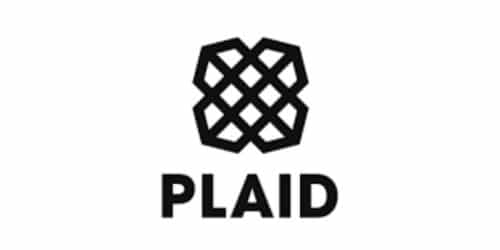Plaid banking is a financial technology that changes how we interact with our finances. It is a secure data transfer network for financial services, enabling the secure sharing of sensitive information between users’ bank accounts and financial apps. Plaid operates in the US, Canada, and Europe. This article will explore how its concept and its pros and cons for consumers and businesses.
What Is Plaid Banking?
Plaid is a banking service that allows users to securely connect their financial accounts with apps, services, or companies. It is an intermediary between the user’s bank or credit card accounts and other financial apps, providing a secure connection and authentication process. Plaid is connected to over 11,000 financial institutions in the United States, Canada, and Europe, making it easier for apps to access users’ financial information without requiring direct connections to multiple banks and institutions.
Features of Plaid Banking
Plaid is a fintech company that provides a platform for connecting financial accounts and sharing data with various apps, services, and companies. Some of its key features include the following:
#1. Easy and Secure Account Connection
Plaid simplifies the process of connecting your bank account to an app. When you sign up with a Plaid-powered app, you can select your financial institution from a list and enter your login and password. Plaid then encrypts the data you’ve chosen to share and securely shares it with the app without revealing your login and password.
#2. Strong Authentication
Plaid prioritizes the security of your data. It protects your data on its systems and requires multi-factor authentication for added security.
#3. Robust Monitoring and Third-Party Security Reviews
Its information security team continuously monitors Plaid’s API and related components. Additionally, Plaid undergoes regular security audits by security researchers and financial institutions to ensure the safety of its API and security controls.
#4. Privacy and Control
Plaid gives you control over the data you share with apps. You can see the type of data you’ve shared with apps or services through your Plaid Portal account. If you no longer want to share data, you can use the portal to disconnect apps or services from your financial accounts and delete data stored in Plaid’s systems.
#5. Encryption and Security Protocols
Plaid employs advanced security and encryption protocols to protect your data during transmission. It uses best-in-class encryption protocols and ensures that personal information is only shared with permission.
#6. Intermediary Link
Plaid acts as an intermediary link between your bank account and financial apps. Instead of giving your login credentials directly to the app, Plaid verifies ownership of your accounts and gathers the requested data points from those accounts. This way, Plaid protects your sensitive financial information.
#7. Wide Coverage
Plaid has connections with over 11,000 financial institutions in the United States, Canada, and Europe. This extensive coverage lets you link your bank accounts to various financial services and apps.
How Does Plaid Banking Work?
To use Plaid banking, consider the following steps:
- Choose to Connect with Plaid: When you download a financial app and begin to set up an account, you may be prompted to use Plaid to connect with your bank or other financial service provider.
- Login to your Bank Account via Plaid: You will be taken to a Plaid-branded page where you can enter your login information for the account you want to connect. You may also be required to complete your bank’s Multi-Factor Authentication (MFA) protocol if applicable.
- Bank Verification by Plaid: Plaid holds that information and connects to your bank to verify it like an intermediary, ensuring both sides are who they are. To complete this process, you might need to complete a secondary verification step, like entering your account’s 2-factor authentication information or completing Plaid’s verification.
- Successful Connection: Once Plaid has verified your account, you’ve created a secure connection between the app and your financial service provider. The information you need to send from your bank to the app can be safely transmitted, and you and your bank can rest assured that the process is secure.
- Data Sharing: Any app you download that needs to access some of your financial information might use Plaid to connect securely and seamlessly to your bank or other financial accounts. The data shared could include account holder information, account transaction details, and account-specific details.
- Use of Integrated Apps: Once the connection is established, you can seamlessly use the integrated apps for various financial transactions like peer-to-peer money transfers, investments, etc. Acorns, Robinhood, Cash App, and Venmo, are just a few of the well-known financial apps that use Plaid.
Cons of Plaid Banking
While Plaid is a popular and widely-used fintech company that provides a secure bridge between financial services apps and users’ banks, there are some cons to using it:
#1. Privacy Concerns
Plaid collects a wide range of information from your financial accounts. The information collected includes account information, credit accounts, loan accounts, investment accounts, identifiers and information about the account owner(s), account transactions, and professional information. While Plaid does not sell or rent users’ financial information, it does share the information with its customers, i.e., the company that wants you to link with them. This means that when, for example, your rent is paid via Plaid, all of that information may be shared with that service.
#2. Security Risks
Plaid Banking stores your passwords and sometimes security questions in an accessible format. While it’s hoped that this is reversible encryption and not plaintext, it does pose a security risk. Additionally, suppose you need help linking your bank. In that case, Plaid encourages you to turn off the two-factor verification setting on your bank account, which could potentially expose your account to more risk.
#3. Lack of Control
Using Plaid, you effectively grant your bank full access to your personal information, including loans, funds, investment accounts, credit card statements, addresses, etc. If you prefer to keep some of your financial information private, this could be a concern.
Pros of Plaid Banking
Plaid banking offers several benefits in the fintech industry. Here are some pros of using Plaid banking:
#1. Security
Major financial institutions and fintech companies like Personal Capital, Mint, Chase, and Bank of America trust Plaid to handle sensitive banking information securely. Plaid uses encrypted communication channels and APIs to secure data transfers between banks and fintech apps. This level of security is important for maintaining customer trust and protecting personal information.
#2. Open Banking
Plaid is one of the leading players in the open banking space. Open banking allows for the secure sharing of financial information between different apps and services, enabling users to have a more holistic view of their finances and access a wider range of financial services. The Financial Conduct Authority (FCA) in the UK and other regulatory bodies have approved Plaid’s open banking system, ensuring compliance with regulations like the updated Payment Services Directive (PSD2).
#3. Integration
Plaid works with thousands of banks, financial institutions, and developers, making it easier for fintech apps to connect with and access banking information. Plaid acts as an intermediary between apps and banks, providing a connection layer that simplifies the integration process and eliminates the need for developers to work with different bank APIs and legacy systems.
#4. Wide Range of Supported Apps
Plaid supports over 5,000 services and applications, including popular apps like Robinhood, Venmo, Betterment, Acorns, and Mint. This wide range of supported apps makes Plaid a versatile and widely adopted solution in the fintech industry.
#5. Open Banking Payments
Plaid powers open banking payments by working directly with merchants and partnering with Payment Service Providers (PSPs). By leveraging Plaid’s payment lifecycle products, merchants can verify and reconcile payments, process instant refunds and payouts, and deliver a better consumer experience.
Plaid Supported Banks
There are over 11000+ supported banks around. Some examples include the following:
- Ally Bank
- Huntington Bank
- KeyBank
- Navy Federal Credit Union
- Oxygen
- Arvest Bank – Online Banking
- Regions Bank
- Santander – Personal
- Union Bank
- Wells Fargo
- Bank of America
- TD Bank
- Vanguard
- American Express
- Citizens Bank
- Fidelity
- Marcus by Goldman Sachs
- Aspiration
- Empower Federal Credit Union
- Equity Bank
- FNB Bank (KY)
- Synchrony Bank
- Interactive Brokers – US
- Alliant Credit Union
- North Shore Bank
- Nelnet – Education Financing
- Novo
- Barclaycard
- RIA Federal Credit Union
- Sutton Bank (OH) – Online Banking
For a complete list of Plaid-supported banks, check the Plaid Banking website.
How Do I Unlink My Bank From Plaid?
To unlink your bank from Plaid, you must access the application or service that is using Plaid to connect to your bank. In this case, the steps to unlink your bank may vary depending on the specific application you’re using.
For example, if you’re using Google Pay, you can remove your bank account from Google Pay, which will subsequently remove the link between your bank and Plaid. However, if you use an application like Freshbooks, navigate to the bank account you want to remove, then click the Disconnect link.
Here is a general guide to unlinking a bank from Plaid:
- Open the application or service that uses Plaid to connect to your bank.
- Navigate to the settings or account management section.
- Find the option related to bank accounts or financial data.
- Locate the bank account you wish to unlink.
- Click on the disconnect or remove link/button next to the account.
- Remember to check the privacy policy of your application or service to understand how your data is handled after disconnecting your bank account.
Is Plaid Safe for Banking?
Plaid is considered safe for banking. It uses advanced security measures and encryption protocols to protect your financial information during transmission.
Plaid Banking uses encryption protocols like the Advanced Encryption Standard (AES 256) and Transport Layer Security (TLS) when transmitting financial data, as well as multifactor authentication (MFA), 24/7 monitoring, cloud storage, and bug bounty programs. Furthermore, Plaid promises to never share your data without your permission and to never sell or rent your information to other companies.
Also, Plaid Banking offers control over data access and sharing, meets international security standards, and undergoes independent testing. It has ISO 27001 and ISO 27701 certifications. For further security, it is advisable to follow standard online safety measures, check URLs, lock icons, and update device security settings.
Does Plaid Take Money Out of Your Account?
Plaid Banking services enable seamless transactions and transfers between apps and banks. It encrypts financial data and supplies it securely to the application, ensuring privacy and sharing only the information you choose. It does not take money out of your account. Plaid uses secure connections and encryption protocols like AES 256 and TLS to protect your data during transmission.
Can Plaid See My Bank Account Balance?
When you link your bank accounts to an application that uses Plaid, Plaid takes the account logins you provide, encrypts the financial data requested (such as an account balance), and then supplies it to the application with a secure connection.
Plaid offers a product called Balance, which allows developers to receive real-time balance information via the /accounts/balance/get endpoint. This real-time balance data can be useful for checking if an account has sufficient funds before using it for money transfers or other financial transactions. Balance is available with other Plaid products, such as Auth for money movement, account funding use cases, or Transactions for personal financial management use cases. It’s important to note that Plaid’s other products also provide balance information. Still, this data is typically updated about once a day and may return cached data, which is unsuitable for situations where real-time balance information is needed.
Does Plaid Charge a Fee?
Plaid offers different pricing models depending on the product and environment. Developers can use Plaid in the Development and Sandbox environments for free, while the Production environment activates pricing once the application is ready. Plaid uses three basic pricing models: one-time fee products, subscription fee products, and a per-request fee structure. Pricing plans include Growth plans, Custom (aka Scale) plans, partnership Pricing, and Consumer Usage. Growth plans require a minimum spend of $100 per month, while Custom (aka Scale) Plans require a minimum spend of $500 per month and an annual commitment.
Related Articles
- RETAIL BANKING: Definition Types and How It Works
- BEST MOBILE BANKING APPS IN 2023
- CORPORATE BANKING: How It Works






